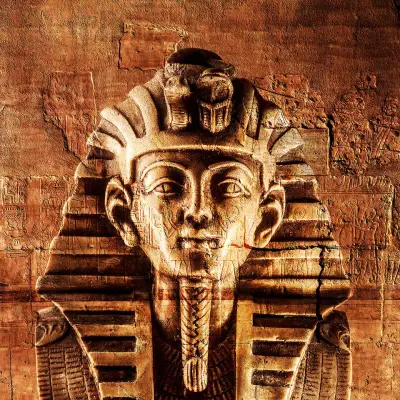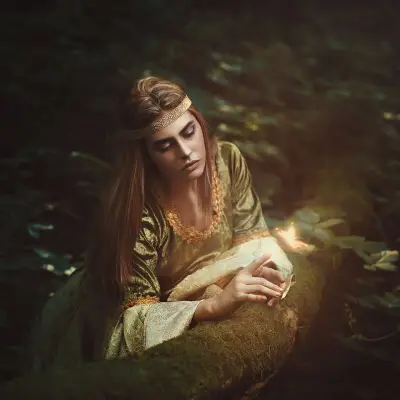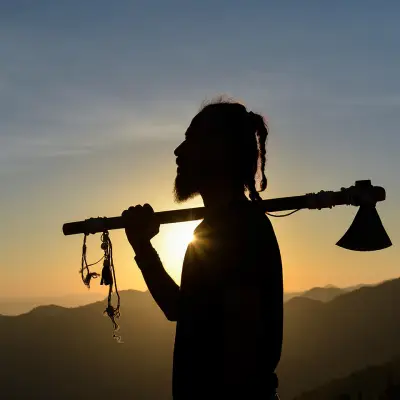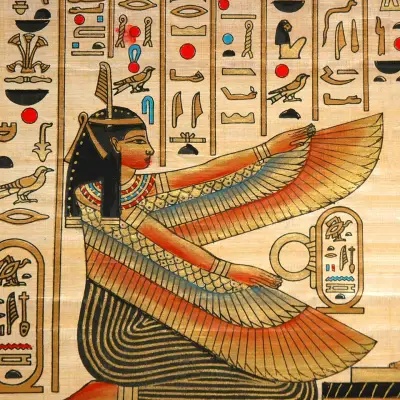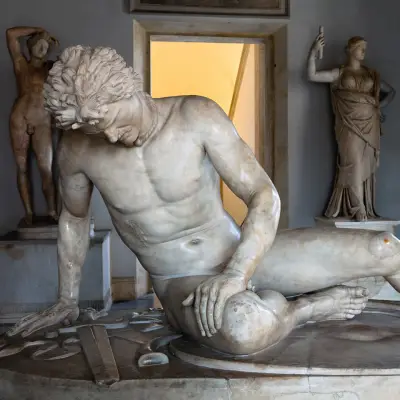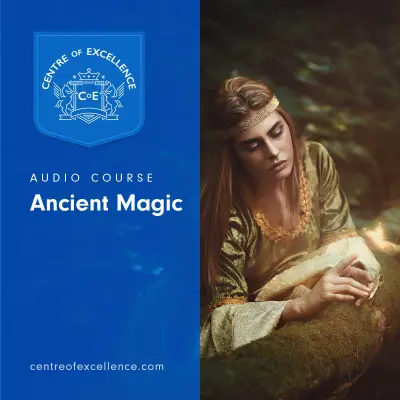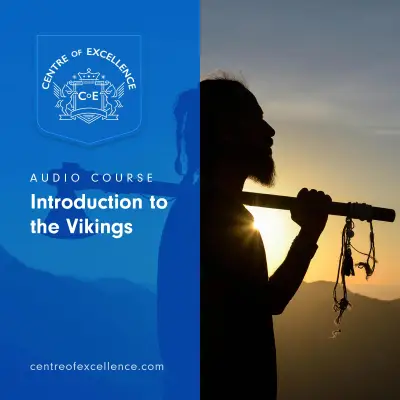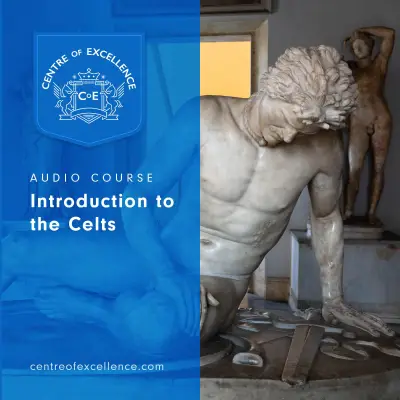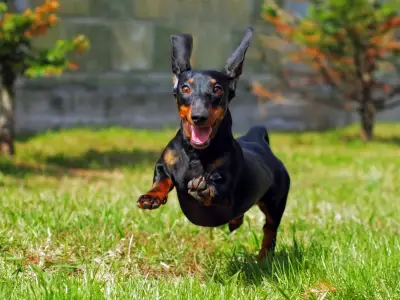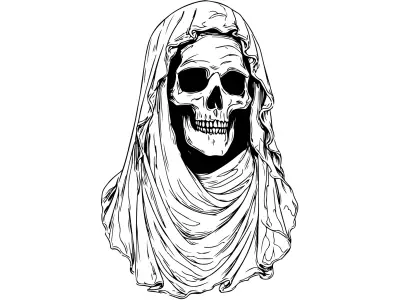Death is one of life’s greatest mysteries. It’s no surprise, then, that people throughout history have sought to understand it through stories, symbols, and powerful figures known as death deities. Whether you're curious about ancient beliefs, fascinated by myths, or searching for the meaning behind these divine figures, exploring the gods of death and goddesses of death opens a window into how cultures view life, death, and what might lie beyond.
Across the world, every civilisation has had its own gods of the underworld, guardians of the afterlife, and rulers of realms unseen. These deities weren’t always fearsome or evil; many were protectors, guides, and even symbols of rebirth. Let’s explore some of the most fascinating death gods, from the well-known to the more obscure.
Jump to:
- Osiris: The Egyptian God of Death
- Hades: Greek God of the Underworld
- Thanatos: The Greek Personification of Death
- Hel: Norse Goddess of Death
- Yama: Hindu God of Death
- Izanami: Japanese Goddess of Death
- Mictlantecuhtli: Aztec God of Death
- Morrigan: Celtic Death Goddess
- Ankou: The Grim Reaper of Celtic Folklore
- Ereshkigal: Babylonian Goddess of Death
- Mot: Canaanite Chaos God of Death
- Supay: Inca God of Death
- Baron Samedi: Voodoo Spirit of Death
- Santa Muerte: Modern Death Goddess
- The Grim Reaper: Iconic Death God Figure
- Cailleach: The Celtic Goddess of Winter and Death
- The Meaning Behind Death Deities
- Study Norse Mythology for £29
1. Osiris: The Egyptian God of Death
Osiris is one of the most well-known Egyptian death gods, embodying death, resurrection, and renewal. As the god of the dead and ruler of Duat, he played a central role in Egyptian myths about the afterlife. After his betrayal and murder by his jealous brother Set, Osiris was resurrected by his devoted wife, Isis. This myth transformed him into a powerful symbol of eternal life. Egyptians believed that Osiris judged the souls of the deceased, weighing their hearts against the feather of Ma’at to determine their fate in the afterlife. His story offered comfort—the promise that death could lead to rebirth.
Powers: Egyptian god of the underworld, judge of souls, and god of resurrection and fertility. Osiris had the power to grant eternal life to the worthy.
Symbols: The crook and flail (symbols of kingship and rulership), the atef crown, green skin representing rebirth, and the djed pillar, symbolising stability and endurance.
2. Hades: Greek God of the Underworld
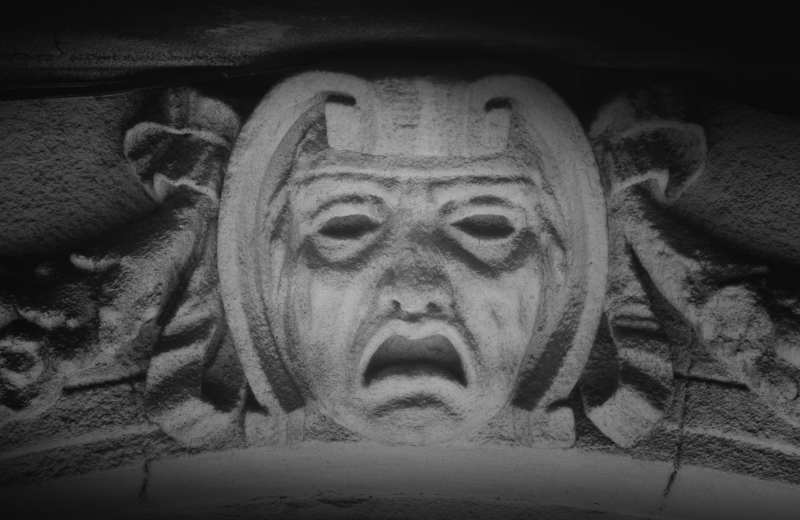
Hades, often mistaken for an evil figure, was a just and balanced ruler among the gods of the underworld. Known as the god of death in Greek mythology, Hades governed the realm where all mortal souls eventually arrived. While he was stern and unyielding, he wasn’t cruel; his role was to maintain order in the afterlife. Unlike other Olympian gods, Hades rarely left his dark domain. His presence in mythology reminds us that death is a natural, impartial force rather than a punishment.
Powers: Lordship over the underworld, control of the dead, and dominion over hidden wealth beneath the earth, such as precious metals and fertile soil.
Symbols: The helm of invisibility, the bident (a two-pronged staff), the Cerberus (three-headed dog), and the cypress tree, often linked with mourning and death.
3. Thanatos: The Greek Personification of Death
Thanatos represents a gentler side of death in Greek mythology. Unlike violent ends brought by war gods, Thanatos was the embodiment of peaceful death, guiding souls softly into the afterlife. Among Greek gods of death, he stood out for his calm and inevitable nature. His presence reassured mortals that death need not be feared but accepted as part of life’s journey. Thanatos appeared in many myths as an unrelenting force, yet never malicious.
Powers: Personification of non-violent death, ability to guide souls, and the power to end life without suffering.
Symbols: Wings (symbolising swiftness), an extinguished torch (representing life snuffed out), poppies, and sometimes a sword.
4. Hel: Norse Goddess of Death
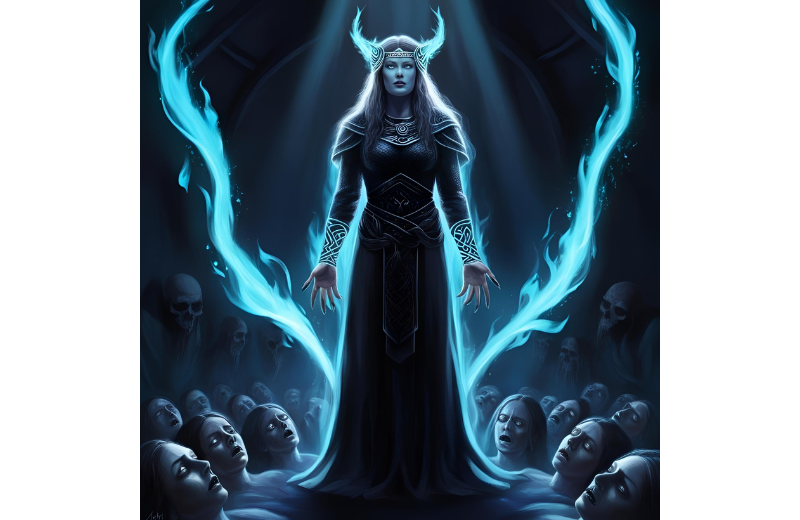
Hel reigns over the realm of the same name, receiving those who die of sickness, old age, or dishonourable causes. As Norse mythology’s goddess of the dead, Hel is a striking figure—half alive, half decayed. She embodies the stark reality of death, neither cruel nor kind, but inevitable. In Viking belief, Hel’s domain was a cold and shadowy place, distinct from Valhalla’s glory. Yet, she ruled with authority and ensured the souls under her care remained in her realm.
Powers: Sovereignty over the dead, authority to keep souls within her realm, and control over the boundaries between life and death.
Symbols: The duality of her appearance (half flesh, half corpse), wolves, and the realm of Helheim itself, often depicted as a dark, misty land.
5. Yama: Hindu God of Death
Yama is honoured as the first mortal to die, making him the natural choice as the Hindu god of death and ruler of the underworld, Naraka. He is a key figure among death deities, upholding Dharma by judging the souls of the departed. Yama determines whether a soul is reincarnated or moves closer to liberation (moksha). His role is not feared but respected, as he ensures cosmic balance and moral order.
Powers: Judgment of souls, enforcement of karmic law, control over life and death cycles, and guardianship of the southern direction in Hindu cosmology.
Symbols: The noose (used to capture souls), the buffalo he rides, the danda (staff of punishment), and his dark complexion, signifying his association with death.
6. Izanami: Japanese Goddess of Death

Izanami, once a creator goddess, became one of the most sorrowful figures among Japanese gods of death after her untimely death. Upon descending to Yomi, she transformed into a goddess of death, representing the inescapable divide between life and death. Her tragic tale with her husband, Izanagi, explains the origin of mortality in Japanese mythology. Izanami’s role highlights themes of loss, inevitability, and the permanence of death.
Powers: Sovereignty over Yomi, power to curse the living, and embodiment of death’s irreversible nature.
Symbols: Yomi (the land of the dead), decaying flesh representing transformation, and the barrier stone sealing the living from the dead.
7. Mictlantecuhtli: Aztec God of Death
Mictlantecuhtli stands tall, literally skeletal, as one of the most iconic Aztec gods of death. As ruler of Mictlan, he presided over the souls of those who died ordinary deaths. In Aztec culture, death was embraced as part of life’s rhythm, and Mictlantecuhtli ensured balance within that cycle. His fearsome appearance was not to inspire dread but to remind the living of their destiny.
Powers: Control over the underworld, guardianship of souls, and influence over death-related rituals.
Symbols: Bones and skulls, owls (messengers of the underworld), spiders, bats, and his skeletal form, representing mortality.
8. Morrigan: Celtic Death Goddess
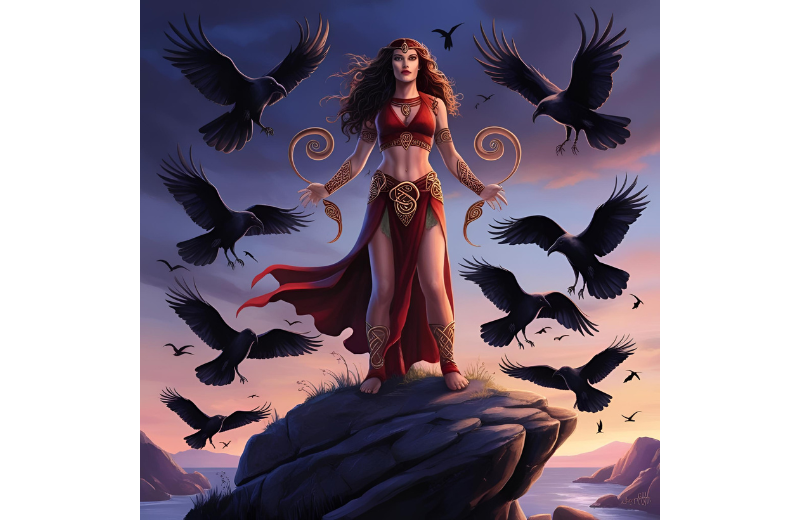
Morrigan, the Celtic goddess of death, is shrouded in mystery and power. Associated with prophecy, fate, and warfare, she determined the outcomes of battles and guided fallen warriors to the afterlife. Known as a triple goddess of death in Celtic mythology, Morrigan represented the cycles of life, death, and rebirth. Her connection to crows and ravens signified her constant presence on the battlefield, watching over life’s transition into death.
Powers: Prophecy, control over life and death in battle, shapeshifting, and influencing fate.
Symbols: Crows and ravens, the number three (reflecting her triple form), rivers (linked to transformation), and the battlefield.
9. Ankou: The Grim Reaper of Celtic Folklore
Ankou, a lesser-known but chilling figure, is similar to the Grim Reaper in Breton and Welsh folklore. As a silent collector of souls, Ankou roams the night with his creaky cart, gathering the dead. Unlike many death gods, Ankou isn’t worshipped but acknowledged as a necessary presence—a reminder that death comes for all, regardless of status or age.
Powers: Harvesting souls, forewarning death within villages, and serving as a personification of mortality.
Symbols: The black cloak, wide-brimmed hat, skeletal figure, scythe, and his ghostly cart drawn by black horses.
10. Ereshkigal: Babylonian Goddess of Death
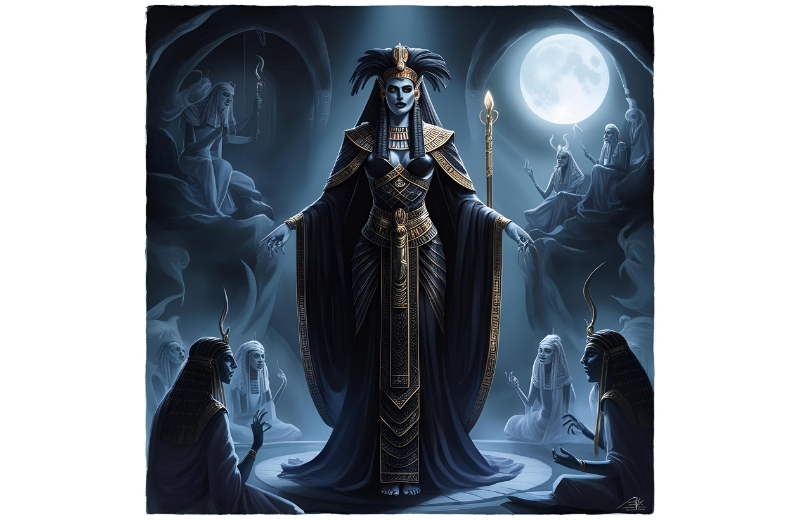
Ereshkigal was the sovereign of Irkalla, the Mesopotamian underworld, where all souls, regardless of virtue, were destined. As a goddess of the dead, she ruled with absolute authority, embodying the inevitability of death. Unlike gods who traversed realms, Ereshkigal remained isolated, representing the finality of the grave. Her myths, including confrontations with her sister Inanna, reveal the harsh but necessary role she played among the Babylonian gods of death.
Powers: Absolute rule over the underworld, control over all souls of the deceased, and power to deny escape from death’s domain.
Symbols: Dark veils, subterranean imagery, lions, owls, and the gates of the underworld.
11. Mot: Canaanite Chaos God of Death
Mot was feared as the chaos god of death in Canaanite mythology, representing not just death but annihilation and barrenness. Unlike deities who maintained balance, Mot was a devourer, consuming gods and mortals alike. His eternal struggle with Baal, the god of life and fertility, symbolised the cycle of seasons, where death and life were locked in endless conflict.
Powers: Power to bring sterility, destruction, and oblivion; the ability to consume life itself.
Symbols: The open mouth (devouring force), desert landscapes, drought, and decay.
12. Supay: Inca God of Death
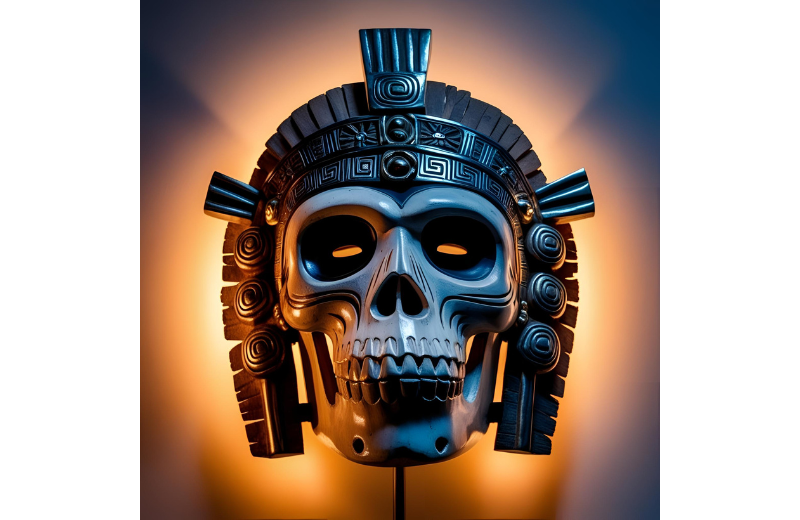
Supay ruled Ukhu Pacha, the Incan underworld, and was both feared and respected. While known primarily as the Inca god of death, Supay also played a protective role, especially for those working beneath the earth. Miners would often offer tributes to him for safety. This dual nature, common among death deities, made Supay a complex figure; one who could either doom or defend.
Powers: Guardianship of the underworld, control over subterranean realms, and influence over death and misfortune.
Symbols: The underworld caves, masks, demonic imagery, and offerings left by miners.
13. Baron Samedi: Voodoo Spirit of Death
Baron Samedi is one of the most recognisable figures in Haitian Vodou, a spirited guardian among death spirits. With his top hat, dark glasses, and ever-present cigar, he is both a protector of the dead and a trickster. Unlike many sombre death gods, Baron Samedi celebrates life even in death, presiding over funerals and ensuring that the dead are properly buried to prevent them from becoming restless spirits.
Powers: Mastery over life and death, the ability to heal or curse, and protection of the dead.
Symbols: Top hat, skull face paint, cigars, rum, and the cross (linking him to the crossroads between life and death).
14. Santa Muerte: Modern Death Goddess
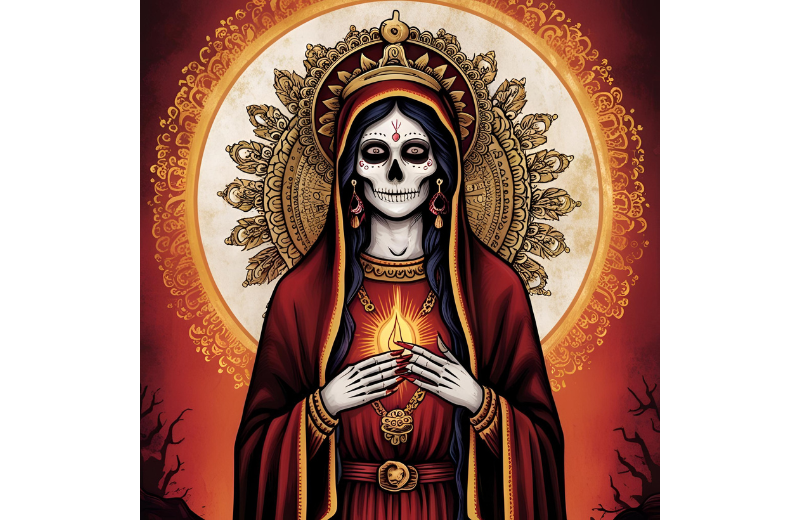
Santa Muerte, meaning "Holy Death," is a modern goddess of death known across Mexico and beyond. Though not tied to ancient mythologies, she has become a powerful spiritual figure, offering protection, healing, and safe passage to the afterlife. Devotees turn to her for comfort in times of danger, illness, or uncertainty, viewing her as a compassionate force within death's inevitability.
Powers: Protection, granting favours, guidance in death, and healing.
Symbols: A skeletal figure clad in robes, scythe, globe (representing dominion over the world), scales of justice, and candles in various colours symbolising different blessings.
15. The Grim Reaper: Iconic Death God Figure
The Grim Reaper has transcended cultures to become the universal face of death. Cloaked in black with a scythe in hand, this figure silently reaps souls when their time has come. While not originating from any single mythology, the Grim Reaper embodies the role of a neutral god of death, neither cruel nor kind, simply inevitable.
Powers: Harvesting souls, marking the end of life, and guiding the dead to the afterlife.
Symbols: The scythe, hourglass (representing the passage of time), black cloak, skeletal form, and the shadowy presence signalling death’s arrival.
16. Cailleach: The Celtic Goddess of Winter and Death
Cailleach is a powerful figure in Celtic mythology, associated with winter, storms, and death. Often depicted as an old hag, she represents the destructive forces of nature that clear the way for renewal. Though not a death goddess in the traditional sense, Cailleach’s connection to the dying of the year and the harshness of winter places her firmly among Celtic death goddesses. She embodies transformation, the end of cycles, and the quiet stillness before rebirth.
Powers: Control over winter, storms, the land’s barrenness, and the transition between life cycles.
Symbols: The staff or hammer (used to shape landscapes), mountains, stones, wolves, and the cold winds of winter.
Recommended for you!
Best SellersThe Meaning Behind Death Deities
These gods and goddesses of death reflect how cultures understand the cycle of life and death. Whether through the judging scales of Osiris, the quiet guidance of Thanatos, or the chaotic hunger of Mot, each deity answers timeless questions about fate, morality, and what awaits beyond.
Some figures, like Yama and Mictlantecuhtli, highlight the role of justice and balance. Others, like Morrigan or Baron Samedi, bring personality and complexity to the concept of death. Even figures like the Grim Reaper show that humanity has long sought ways to visualise and accept life’s final chapter.
Study Norse Mythology for £29
If exploring these gods of the underworld, death deities, and legendary figures has sparked your interest, there’s so much more to uncover. Mythology is filled with stories that explain death, love, heroism, and the very fabric of existence.
You can deepen your understanding of ancient myths and legends with our Norse Mythology Diploma Course. Follow the link today and enrol for a discounted price of just £29!

